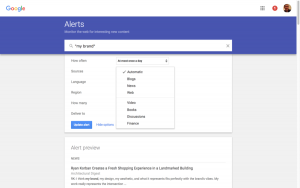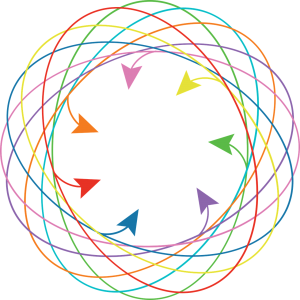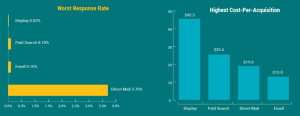Starting a blog from scratch can seem daunting. There are so many things to consider from the perfect name to the platform you’ll use to design and branding.
That’s before you’ve even written any content. So, it’s understandable if you feel a bit overwhelmed at the start.
But, it doesn’t have to be that way.
There are some simple tasks that you can take care of in the early stages to get you in the right lane. And I’ve created this guide to make starting your blogging journey a little less scary.
1. A sweet idea
This is where it all begins. Perhaps, you already know what you want to blog about. If not, here are some tips:
Pick a smaller niche
What do you want to blog about? This could be travel, fashion, parenting, finance, or many other topics.
Once you have decided on a broad topic, it’s time to niche it down. This means focusing on a specific area of that topic.
For example, if you want to start a travel blog, your specific niche could be “budget travel in Europe” or “backpack travel around South America”.
If you have a fashion blog, you could focus on “seasonal outfits”, “wedding fashion”, or even overlap it with travel and have a “holiday packing” blog, and so on.
But, why bother niching things down? Surely you’ll reach a bigger audience by keeping the topic broad?
Well, not necessarily.
Having a specific niche allows you to appeal to a specific audience.
Let’s use the travel example. Millions of people love to travel. So, by having a generic travel blog, you will appeal to the masses.
But you’ll also be competing with hundreds (possibly thousands) of well-established, popular blogs. You’ll likely end up waaaay off page one on Google, and, let’s face it, if you were searching for advice, would you trust someone you’d heard of before or a complete newbie?
A specific niche allows you to narrow down your audience, and rank for more specific searches. In time, this will build trust, a brand, and a following. Then, you could start branching into broader topics.
Consider your audience
Once you’ve narrowed down your niche, decide who you’re writing for.
The way you speak to your audience will change depending on who they are. So, do your research.
What specific topics or words do people in your niche use? How do they like to communicate (text, social media, video)?
Tailoring what you write for your audience gives them exactly what they need in a way they’ll easily understand.
2. A to-do list
I love a to-do list.
It keeps you organized, you don’t forget things, and it gives you (or me, anyway) great satisfaction to tick things off.
Chances are, if you’re starting a blog from scratch, you’re going to have quite a lot on your list. So, try to break this into manageable chunks.
Project management tools, such as Asana, Trello, CoSchedule and the like are super helpful in this respect. They allow you to create lists, set deadlines, break tasks down into smaller tasks, and so on.
Here’s how I organize my projects with Asana, for example:
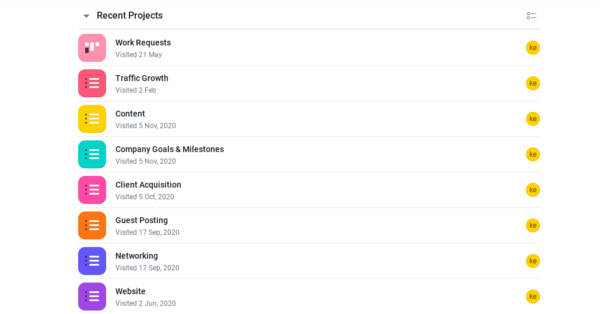
- asana categories
3. A name for your blog
Your blog name is how people will remember you, so choose a powerful one.
Use a domain name checker, e.g. Name.com, throughout the process to see if the ideas you like are available. For example, it shows us that myfabulousblog.com is taken:

- domain name checker
Trust me, there’s nothing worse than deciding on a great name, building an idea around it, and then realizing the domain is taken! I don’t recommend trying any shortcuts here either.
For example, if you want ‘apple.com’ but that’s already taken (obviously!), then don’t try ‘apple123.com’. Numbers in the URL instantly look spammy so Google won’t like it, and you’ll always be outranked by the original site.
Pick something original, memorable, and not too long.
4. A platform
Next, you’ll need to get your very own piece of real estate on the web. This will come in the form of a platform on which you can post your stuff.
There are lots of great options. But, I personally use WordPress, for which you need hosting (the webspace that stores and displays your content). It’s just so blummin’ customizable, which means you can scale your blog as you please over time.
You can purchase a WordPress plan from many hosting providers. They might also provide domain name registration and technical support to help get you started.
I opted for BlueHost because it provides quick and easy setup, as well as the best customer support I’ve received in a long time.
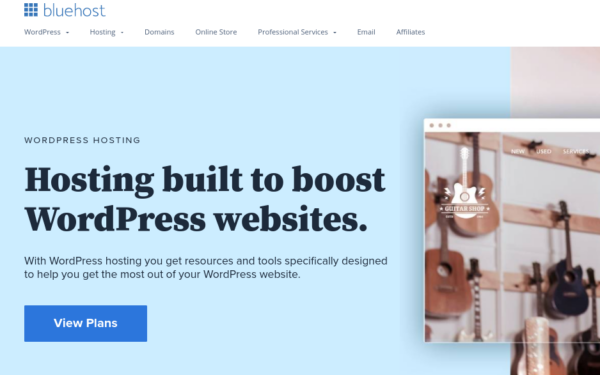
- bluehost hosting
A theme
A WordPress theme is essentially a template for how your site looks and functions. There are thousands of WordPress themes available, but, at least at the beginning, you can opt for a free one.
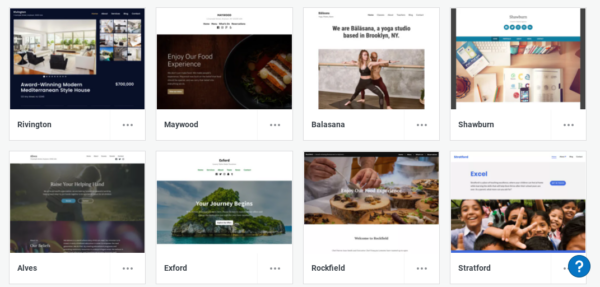
- wordpress themes
Make sure the theme is responsive, optimized for mobile, and loads quickly.
5. Awesome design and branding
Now it’s time for the good stuff – designing the website!
You’ll need to include an eye-catching Home page, and a Contact page so people can get in touch. An About page is also essential and often one of the most visited pages on any website.
Remember to keep the site simple, spaced out, and easy to navigate.
Besides creating the actual pages, you’ll need to consider…
A logo
You can create a logo in minutes with tools like Canva, even if you have limited design skills. The tool offers free and premium templates:
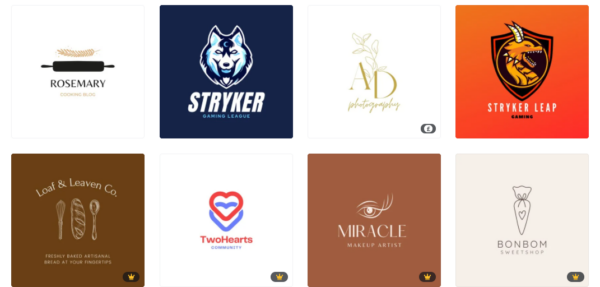
- canva logo templates
Along with this, you’ll also need a favicon, which is the little icon that goes at the top of a webpage.
A brand identity
When you see golden arches, you think chicken nuggets, right? That’s the power of branding.
Branding is a combination of design, style and message. It’s about what you stand for and how people should identify you.
So, think about your favorite bloggers. What is it that makes them recognizable?
A few basic branding elements include a font, a color palette, and a personality. Are you funny, witty, casual, or serious?
Once you know these things, you can base your web design and content around them to build a recognizable brand.
6. Fabulous content
Your pages are up, now it’s time to write content!
I recommend launching a blog with at least five active posts along with informative, keyword-rich pages. This gives your audience something to find when the blog goes live.
When it comes to new content, keep in mind that you’re blogging for your readers, not yourself. Make sure the content is relevant and informative. Stay away from anything too “salesy”, and stick to a tone of voice that matches your brand’s personality.
Once your blog is live, stick to a publishing schedule for new posts. That way, your audience knows what to expect and it’s better for search engines too.
7. Social media
Although it’s a good idea for bloggers to use social media, try not to spread yourself too thin on all platforms.
If you’re starting a blog from scratch, having one or two relevant social accounts and posting interesting content consistently is much better than having ten accounts that you post on once a month.
So, pick two social media sites that you’re comfortable with and work for your niche and start there.
Final Word
Starting a blog from scratch isn’t easy. There might be some roadblocks and there will be things that need a lot of thinking over.
But, at the end of the day, if you’re passionate about a topic and love to write, blogging can be extremely rewarding.
By following these tips, you should be well on your way to creating an awesome blog from scratch.
Digital & Social Articles on Business 2 Community
(39)


